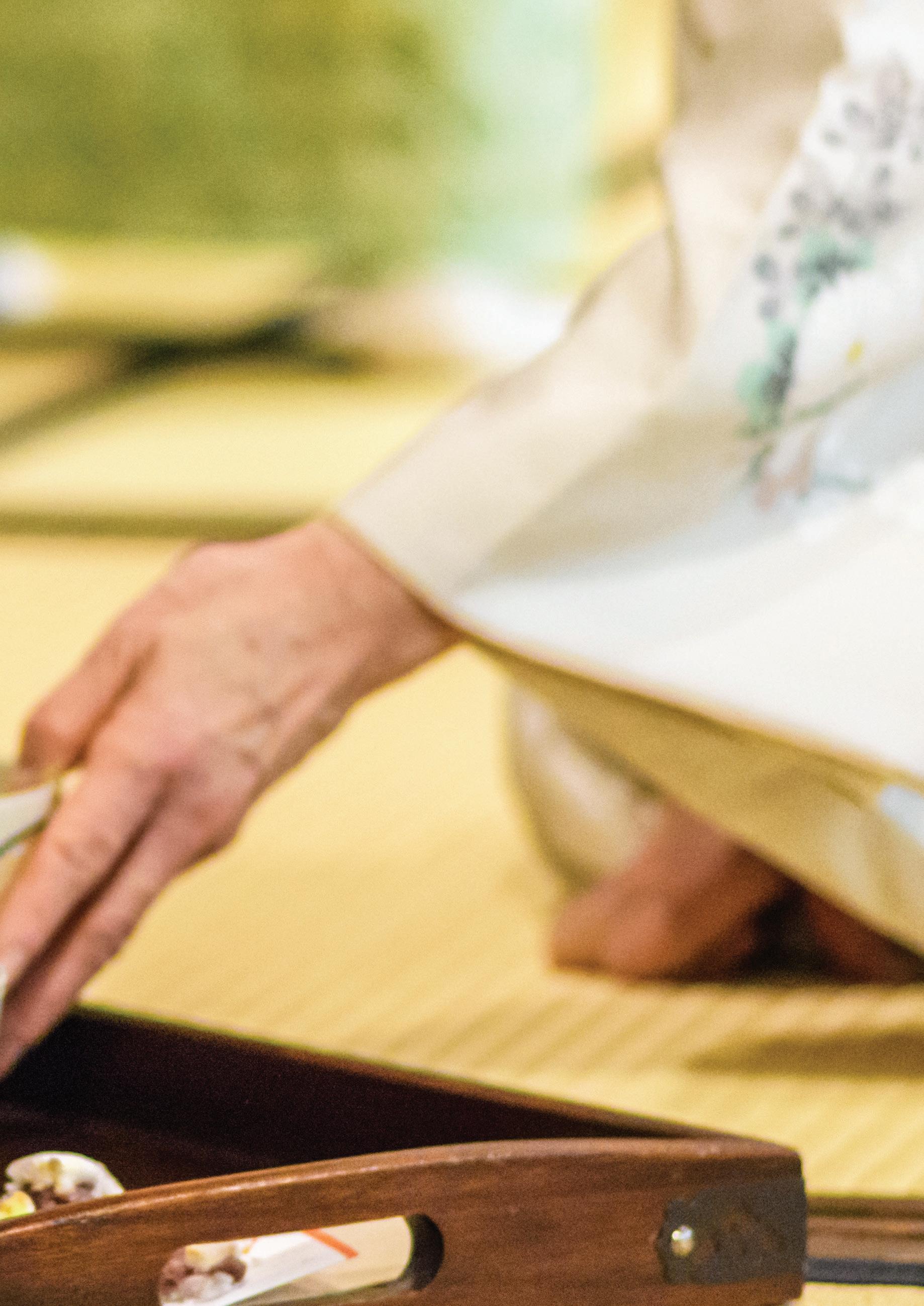
2 minute read
Six tea utensils necessary for a
Tea Ceremony
For a truly immersive tea ceremony experience, six essential tea utensils are required. Each of these utensils carries its own significance, contributing to the overall atmosphere and symbolism. The first utensil is the Chawan, a tea bowl that embodies unity and respect. Its unique shape and imperfections remind us to appreciate the beauty found in life’s flaws. Next is the Chasen, a bamboo whisk used to create a frothy texture in the tea. The delicate and rhythmic whisking motion infuses the tea with intention and mindfulness.
Advertisement
He Chashaku, a bamboo tea scoop, ensures precise measurements and scoops of tea powder, maintaining a balanced flavor in each serving. The Hishaku, a long-handled bam- boo ladle, gracefully pours hot water from the Kama, an iron kettle, into the Chawan, symbolizing purification and creating a sacred space. The Futaoki, a ceramic rest, prevents the Kama’s lid from touching the ground, serving both practical and aesthetic purposes. Lastly, the Mizusashi, a lidded water container, holds pure and clear water, representing the continuous flow of life and the replenishment of the Kama. By employing these six tea utensils, one can fully immerse themselves in the art and spirit of the tea ceremony, appreciating its meticulous rituals and experiencing a deep sense of tranquility and harmony. It is an art form that celebrates the beauty of impermanence and the importance of mindfulness in everyday life.


Upon entering the tea room, guests engage in a purification ritual, symbolizing their detachment from the outside world. They wash their hands and rinse their mouths, preparing themselves for the ceremony’s sacred space. Seating follows a specific arrangement based on status, with the guest of honor closest to the host. Maintaining a respectful silence, participants embrace mindfulness, focusing their attention on every gesture and movement throughout the ceremony. The tea ceremony is a highly ritualized process, with precise actions and movements. Guests closely observe and follow the host’s lead as they gracefully handle the tea utensils and serve the tea. When presented with a bowl of tea, guests receive it with both hands as a gesture of gratitude. Before sipping, they turn the bowl to admire its design and appreciate the tea’s aroma. Each sip is savored, engaging the senses in a moment of tranquility. Expressing appreciation is an integral part of the ceremony. Guests offer compliments to the host for the tea, utensils, and the serene ambiance of the tea room. This exchange of gratitude further enhances the atmosphere. Silence is observed emony.

As the ceremony nears its conclusion, guests carefully clean and tidy the tea utensils, returning them to their designated places. They bow to the host, conveying their gratitude for the profound experience they have shared. Through the observance of these rules, the tea ceremony preserves its essence—harmony, tranquility, and the appreciation of simplicity. Each participant is immersed in a meaningful cultural tradition, where time seemingly stands still, allowing them to connect with themselves, others, and the profound beauty found in the art of tea. The rules of a tea ceremony extend beyond the physical actions and gestures. They encompass an inner state of mind, emphasizing humility, mindfulness, and respect for others. Participants are encouraged to be fully present, to let go of distractions, and to appreciate the simplicity moment.
Seven rules of a tea ceremony





